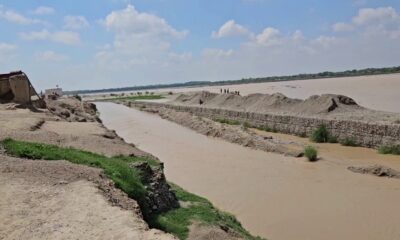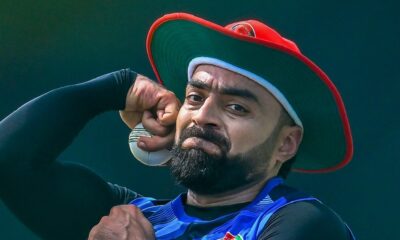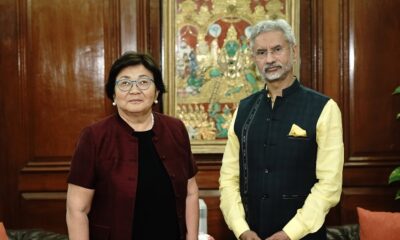World
N. Korea says it tested a new solid-fuel ICBM, warns of ‘extreme’ horror

North Korea said on Friday it had tested a new solid-fuel intercontinental ballistic missile (ICBM), the Hwasong-18, to “radically promote” the country’s nuclear counterattack capability, state media reported.
Leader Kim Jong Un guided the test, and warned it would make enemies “experience a clearer security crisis, and constantly strike extreme uneasiness and horror into them by taking fatal and offensive counter-actions until they abandon their senseless thinking and reckless acts”.
North Korea has criticised recent U.S.-South Korean joint military exercises as escalating tensions, and has stepped up weapons tests in recent months.
South Korea’s defence ministry said North Korea was still developing the weapon, and that it needed more time and effort to master the technology, indicating that Pyongyang might carry out more tests.
North Korean state media outlet KCNA released photos of Kim watching the launch, accompanied by his wife, sister and daughter, and the missile covered in camouflage nets on a mobile launcher.
“The development of the new-type ICBM Hwasongpho-18 will extensively reform the strategic deterrence components of the DPRK, radically promote the effectiveness of its nuclear counterattack posture and bring about a change in the practicality of its offensive military strategy,” KCNA said, using the initials of its official name.
“Pho” means “artillery” in Korean.
Analysts said it is the North’s first use of solid propellants in an intermediate-range or intercontinental ballistic missile.
Developing a solid-fuel ICBM has long been seen as a key goal for North Korea, as it could help the North deploy missiles faster during a war.
Most of the country’s largest ballistic missiles use liquid fuel, which requires them to be loaded with propellant at their launch site – a time-consuming and dangerous process.
“For any country that operates large-scale, missile based nuclear forces, solid-propellant missiles are incredibly desirable capability because they don’t need to be fuelled immediately prior to use,” said Ankit Panda, a senior fellow at the U.S.-based Carnegie Endowment for International Peace. “These capabilities are much more responsive in a time of crisis.”
North Korea will most keep some liquid-fuel systems, complicating the calculations of the U.S. and its allies during a conflict, Panda said.
Vann Van Diepen, a former U.S. government weapons expert who now works with the 38 North project, said solid-fuel missiles are easier and safer to operate, and require less logistical support – making them harder to detect and more survivable than liquids.
North Korea first displayed what could be a new solid-fuel ICBM during a military parade in February after testing a high-thrust solid-fuel engine in December.
Analysts said the U.S. could determine between a solid- or liquid-fuelled launch with early warning satellites that can detect differences in the infrared data produced by various missile types.
The latest launch came days after Kim called for strengthening war deterrence in a “more practical and offensive” manner to counter what North Korea called moves of aggression by the United States.
The missile, fired from near Pyongyang, flew about 1,000 km (620 miles) before landing in waters east of North Korea, officials said. North Korea said the test posed no threats to its neighbouring countries.
A South Korean military official said the missile’s maximum altitude was lower than 6,000 km, the apogee of some of last year’s record-breaking tests.
“North Korea could have opted to focus on collecting data necessary to check its features at different stages than going full speed at the first launch,” said Kim Dong-yup, a professor at the University of North Korean Studies. “As it was a test that did not demonstrate its normal flight pattern, North Korea will likely conduct some more tests.”
World
UN Security Council to vote Friday on Palestinian UN membership
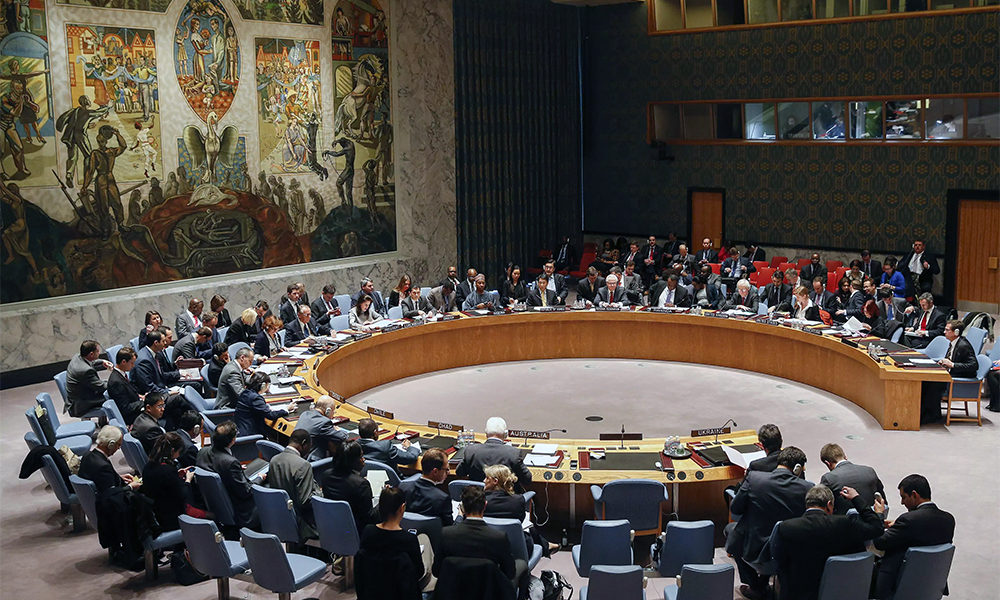
The United Nations Security Council is scheduled to vote Friday on a Palestinian request for full U.N. membership, said diplomats, a move that Israel ally the United States is expected to block because it would effectively recognize a Palestinian state.
The 15-member council is due to vote at 3 pm Friday on a draft resolution that recommends to the 193-member U.N. General Assembly that “the State of Palestine be admitted to membership of the United Nations,” diplomats told Reuters.
A council resolution needs at least nine votes in favor and no vetoes by the U.S., Britain, France, Russia or China to pass. Diplomats say the measure could have the support of up to 13 council members, which would force the U.S. to use its veto.
Council member Algeria, which put forward the draft resolution, had requested a vote for Thursday afternoon to coincide with a Security Council meeting on the Middle East, which is due to be attended by several ministers.
The United States has said that establishing an independent Palestinian state should happen through direct negotiations between the parties and not at the United Nations.
“We do not see that doing a resolution in the Security Council will necessarily get us to a place where we can find … a two-state solution moving forward,” U.S. Ambassador to the U.N. Linda Thomas-Greenfield said on Wednesday.
The Palestinians are currently a non-member observer state, a de facto recognition of statehood that was granted by the 193-member U.N. General Assembly in 2012. But an application to become a full U.N. member needs to be approved by the Security Council and then at least two-thirds of the General Assembly.
The U.N. Security Council has long endorsed a vision of two states living side by side within secure and recognized borders. Palestinians want a state in the West Bank, east Jerusalem and Gaza Strip, all territory captured by Israel in 1967.
Little progress has been made on achieving Palestinian statehood since the signing of the Oslo Accords between Israel and the Palestinian Authority in the early 1990s.
World
EU leaders back new Iran sanctions after attack on Israel
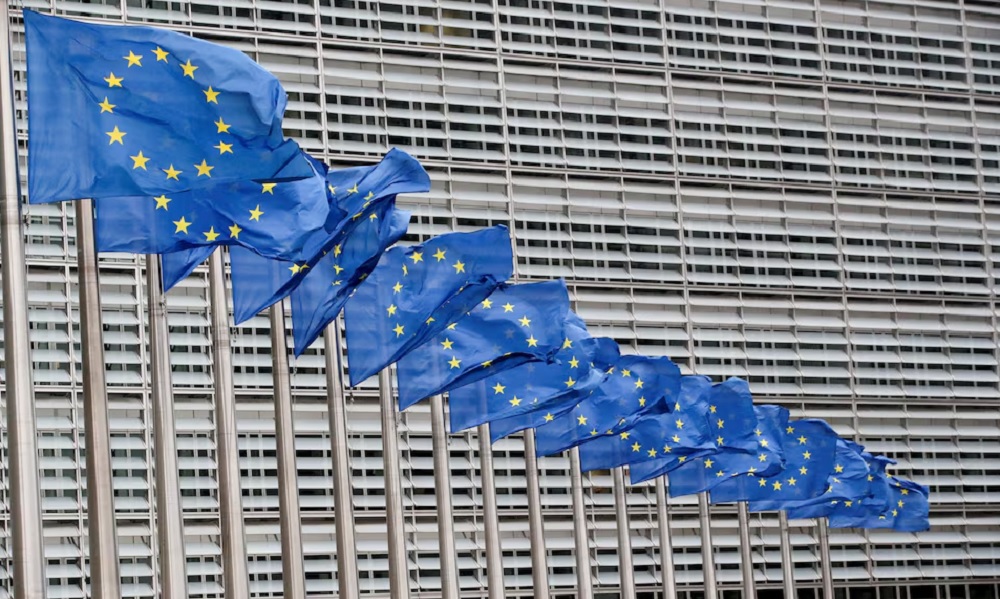
European Union leaders decided on Wednesday to step up sanctions against Iran after Tehran’s missile and drone attack on Israel left world powers scrambling to prevent a wider conflict in the Middle East, Reuters reported.
The summit in Brussels is the first meeting of the EU’s 27 national leaders since Saturday’s attack, more than six months into the war between Israel and the Iran-backed Palestinian militant group Hamas.
Israel has signalled it will retaliate but has not said how. EU leaders condemned the Iranian attack, reaffirmed their commitment to Israel’s security and called on all sides to prevent more tensions, including in Lebanon.
“We feel it’s very important to do everything to isolate Iran,” said summit chairman Charles Michel, adding the new sanctions against the Islamic Republic would target companies involved in the production of drones and missiles.
German Chancellor Olaf Scholz said it was important that Israel “does not respond with a massive attack of its own.”
Italy spoke separately ahead of G7 talks in favour of sanctions against arms suppliers linked to the attack against Israel, as well as those behind attacks on ships in the Red Sea, read the report.
Iran launched its assault in response to an April 1 strike on its embassy in Damascus which it blamed on Israel. Tel Aviv started its broader military offensive in Gaza after Hamas’ deadly attack on Israel on Oct. 7.
ISRAEL AND UKRAINE
EU foreign ministers are due to continue the sanctions work on Monday as the United States and its Western allies hope new steps against Iran will help limit any Israeli retaliation.
The EU already has multiple programmes that target Iran for human rights abuses, the proliferation of weapons of mass destruction, and Tehran’s support for Russia’s war in Ukraine, Reuters reported.
Germany, France and several EU states are looking at expanding a scheme that seeks to curb the supply of Iranian drones to Russia to include the provision of missiles and cover deliveries to Iranian proxies in the Middle East.
Belgium backed introducing sanctions against Iran’s Revolutionary Guard Corps but Scholz said that required further legal checks. The bloc’s top diplomat has said that could only happen if a national authority in the EU found that the group had been involved in terrorist activity.
Analysts say Iran is unlikely to face more severe economic punishment because of worries about boosting oil prices and angering top buyer China.
With the Middle East capturing much of the EU’s attention, Ukraine’s President Volodymyr Zelenskiy appealed for more help in holding the line against Russia, which unleashed an invasion against its neighbour more than two years ago, read the report.
“Here in Ukraine, in our part of Europe, unfortunately, we do not have the level of defence that we all saw in the Middle East a few days ago,” Zelenskiy told the summit, after Israel and allies mostly shot down the incoming drones and missiles.
“It reflects our current key need – the need for air defence,” he said, according to an EU official, repeating his calls for speedier deliveries of the weapons and ammunition previously promised to Ukraine.
World
US and allies plan more Iran sanctions; Israel war cabinet to meet again
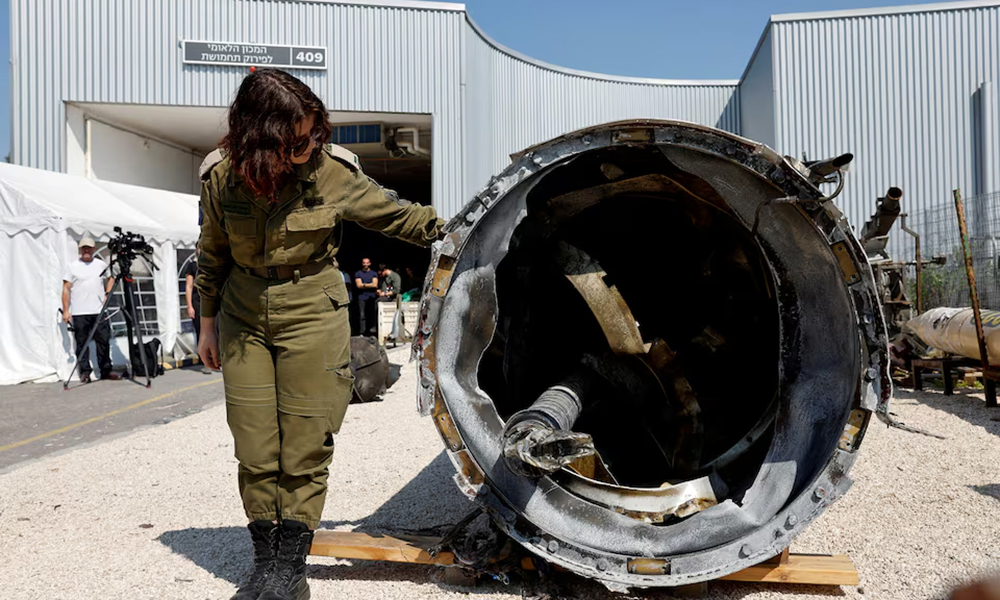
The U.S. and its allies planned fresh sanctions against Iran over its unprecedented attack on Israel, seeking to dissuade Israel from a major escalation as its war cabinet was set to meet for a third time on Wednesday to decide a response, Reuters reported.
While Saturday night’s attack caused no deaths and little damage thanks to the air defences and countermeasures of Israel and its allies, it has increased fears that violence rooted in the six-month-old Gaza war is spreading, with the risk of open war between long-time adversaries Iran and Israel.
Israel’s military chief of staff Herzi Halevi had promised Iran’s launch of more than 300 missiles, cruise missiles and drones at Israeli territory “will be met with a response”, but gave no details.
An Israeli government source said the war cabinet session scheduled for Tuesday had been put off until Wednesday, without elaborating, read the report.
Hoping to steer Israel away from massive retaliation, the U.S. and Europe flagged a toughening of economic and political sanctions against Iran.
The U.S. is planning to impose new sanctions targeting Iran’s missile and drone programme in the coming days and expects its allies will be following suit, National Security Advisor Jake Sullivan said in a statement on Tuesday.
Earlier, Treasury Secretary Janet Yellen said the U.S. would use sanctions, and work with allies, to keep disrupting Iran’s “malign and destabilising activity”.
She told a news conference in Washington all options to disrupt Iran’s “terrorist financing” were on the table, and she expected further sanctions against Iran to be announced soon.
European Union foreign policy chief Josep Borrell, speaking in Brussels after an emergency video conference of EU foreign ministers, said some member states had asked for sanctions against Iran to be expanded and that the bloc’s diplomatic service would begin working on the proposal.
Borrell said the proposal would expand a sanctions regime that seeks to curb the supply of Iranian drones to Russia so that it would also include the provision of missiles and could also cover deliveries to Iranian proxies in the Middle East.
Israeli Foreign Minister Israel Katz said he was “leading a diplomatic attack”, writing to 32 countries to ask them to place sanctions on Iran’s missile programme and follow Washington in proscribing its dominant military force, the Revolutionary Guard Corps, as a terrorist group, Reuters reported.
‘CALM HEADS’
Iran launched the attack in retaliation for an airstrike on its embassy compound in Damascus on April 1 attributed to Israel, but has signalled that it now deems the matter closed.
President Joe Biden told Israeli Prime Minister Benjamin Netanyahu at the weekend that the United States, Israel’s main protector, would not participate in an Israeli counter-strike.
British Prime Minister Rishi Sunak told Netanyahu in a call on Tuesday that escalation in the Middle East was in nobody’s interest and would only worsen insecurity in the region, so it was “a moment for calm heads to prevail”, Sunak’s office said.
Japan Foreign Minister Yoko Kamikawa “strongly urged Israel to exercise restraint” during a call with her Israeli counterpart Israel Kantz on Tuesday evening, according to a readout of the call issued by Japan’s foreign ministry.
The prospect of Israeli retaliation has alarmed many Iranians already enduring economic pain and tighter social and political controls since major protests in 2022-23, read the report.
Since the war in Gaza began in October, clashes have erupted between Israel and Iran-aligned groups based in Lebanon, Syria, Yemen and Iraq.
Israel said four of its soldiers were wounded hundreds of metres inside Lebanese territory overnight, the first known Israeli ground penetration into Lebanon since the Gaza war erupted, although it has regularly traded fire with the heavily armed Lebanese Hezbollah militia.
In Gaza itself, where more than 33,000 Palestinians have been killed in the Israeli offensive according to Gaza health ministry figures, Iran’s action drew applause.
Israel began its campaign against Hamas, the Iranian-backed Palestinian militant group that runs Gaza, after the militants attacked Israel on Oct. 7, killing 1,200 people and taking 253 hostages, by Israeli tallies.
-
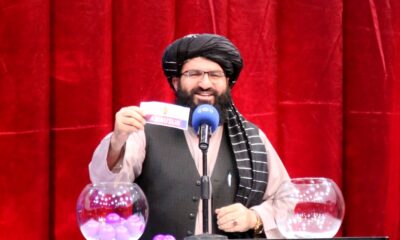
 Sport4 days ago
Sport4 days agoACL fever grows as fixtures finalized
-
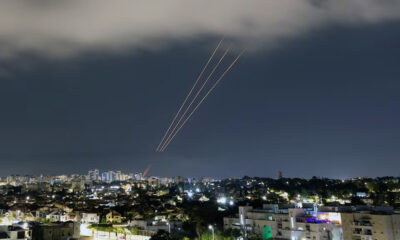
 World4 days ago
World4 days agoUS will not take part in any Israeli retaliatory action against Iran
-
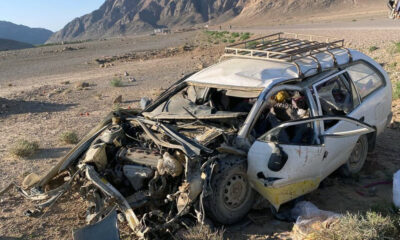
 Latest News4 days ago
Latest News4 days agoOver 50 people dead in traffic accidents over Eid
-
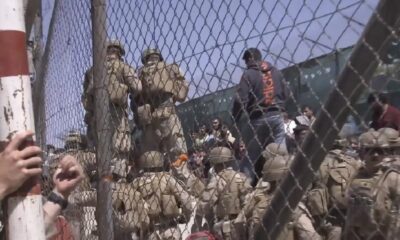
 Latest News4 days ago
Latest News4 days agoUS identifies Kabul airport suicide bomber
-
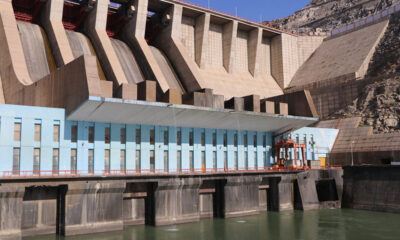
 Latest News4 days ago
Latest News4 days agoGood rains enable DABS to increase power production in Kabul
-
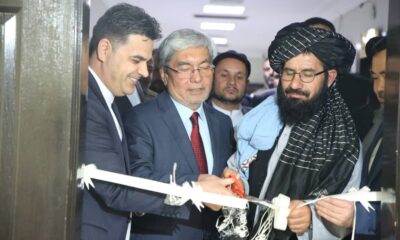
 Business4 days ago
Business4 days agoAfghanistan-Kazakhstan chamber of commerce opens in Herat
-
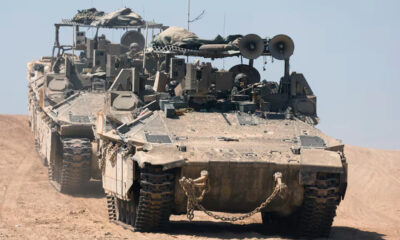
 World3 days ago
World3 days agoIsraeli military vows response to Iran attack as calls for restraint mount
-
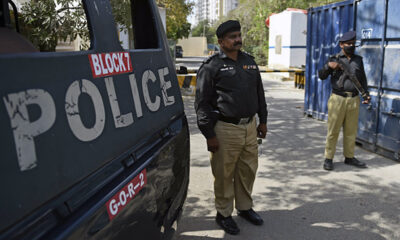
 Latest News3 days ago
Latest News3 days agoPakistani police give Afghans in Balochistan one day to leave




